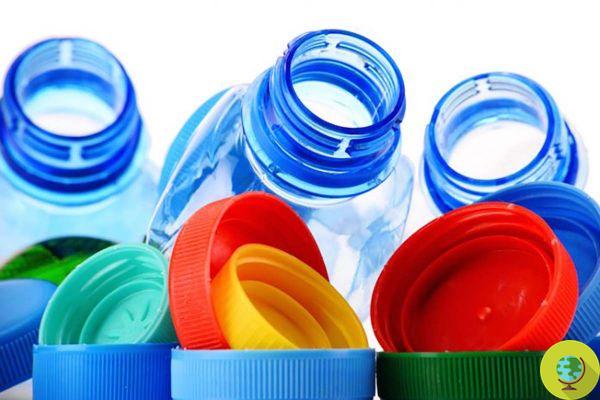
Bisphenol A (or BPA) is a dangerous chemical found in many common products, such as hard plastic bottles. A new study claims that exposure to this substance may actually be much higher than previously believed.
Don't store avocado like this: it's dangerous
Il bisphenol A (or BPA) is a dangerous chemical found in many commonly used products, such as hard plastic bottles. A new study claims that exposure to this substance may actually be much higher than previously believed.
We have talked several times about bisphenol A and the risks to our health of exposure to this substance, considered an endocrine disruptor. Some studies have indeed linked BPA to a high risk of fertility problems and some cancers but, despite this, it remains widely used to harden plastics, prevent metal corrosion and coat paper.
This substance is often found in the linings of food cans, receipts, medical equipment, and hard plastic water bottles.
Now a new study adds an extra piece to the question by explaining that thea how scientists usually measure bisphenol A could drastically underestimate our exposure to this chemical.
Currently, our exposure to BPA is generally measured using what is known as the indirect method. The new study, published in The Lancet Diabetes & Endocrinology, suggests this method may not be accurate and reports that a more recent technique instead finds BPA levels many times higher than would be expected.
What did the new study actually discover? When our body is exposed to BPA, it begins to break down this substance quickly. This means that most of what is found in human urine (which is often used to monitor exposure) is not BPA itself. What is found are in fact the metabolites. Until recently, researchers could not directly measure those metabolites, and the only way they could determine exposure levels in humans was, indirectly, by converting the metabolites to BPA.
But in recent years, new direct methods have begun to emerge, so that "in one fell swoop, BPA and its metabolites are measured," says Roy Gerona, Ph.D., assistant professor at the School of Medicine at the University of California at San Francisco, which operates UCSF's laboratory for clinical toxicology and environmental biomonitoring. However, these methods have not yet been widely adopted.
Gerona, the lead author of the new study, has been working on a direct method for measuring BPA metabolites for years. In the new study he wanted to compare this new technique with a similar one with an indirect approach.
His team used both techniques to analyze urine samples collected from 29 pregnant women, five non-pregnant women and five men. The new direct method found levels of BPA nearly 19 times higher than those identified using the indirect method. And it seemed that the higher the BPA concentration, the more the indirect method underestimated it.
"If the conclusions are true and can be generalized to other populations, research and regulatory communities around the world have systematically underestimated the health risks posed by BPA, perhaps by quite a large margin," commented Jonathan Martin, Ph D., a professor in Stockholm University's Department of Environmental Sciences and Analytical Chemistry, who was not involved in the new study.
But the same professor also solicited the caution in interpreting the results of the new study, which is quite small:
“The magnitude of the problem shown here may not be broadly generalizable. I am reserving the judgment until results like these can be replicated in other laboratories with other samples ”.
Finally, we remind you that the FDA and its counterparts in Canada and the European Union affirm that the BPA used in food packaging and containers does not present risks for consumers. But the European Food Safety Authority is currently reviewing the most recent research on BPA and may update its recommendations in 2020. We'll see what comes up…
Read also:
- BPA: 10 Ways To Lower Your Whole Family's Exposure To Bisphenol A.
- Stop to phthalates, BPA and endocrine disruptors: the European Parliament calls for a dividend in cosmetics, toys and food
- Are Bpa Free plastics really safe?
- Bisphenol A (BPA): still present in 38% of canned foods


























